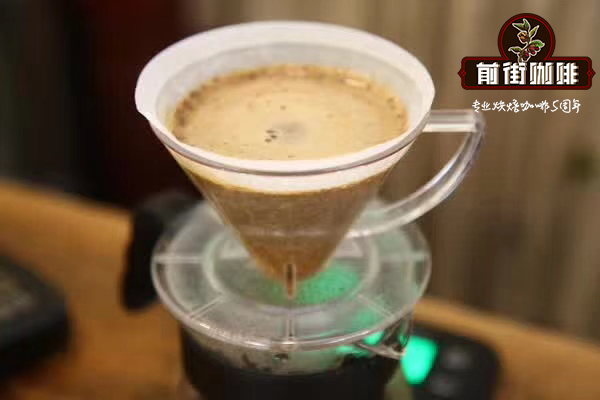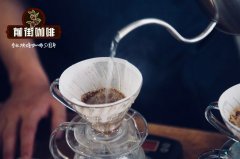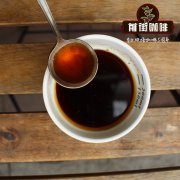A brief introduction to the taste of chaka Rose Summer Coffee recommended by Ethiopian Coffee

Professional coffee knowledge exchange more coffee bean information please follow the coffee workshop (Wechat official account cafe_style)
Qianjie-Ruoxia Village chaka Coffee knowledge sharing
Rose-is a precious coffee variety with a unique jasmine aroma and bright acidity. It is often dominant in various coffee competitions and is becoming more and more expensive.
Rose seeds were first collected from the wild Kafa forest in southwestern Ethiopia in the 1930s, when people were looking for new disease-resistant coffee varieties. The name of Rosa comes from the nearby Gesha Mountain. The rose seeds were first taken to Tanzania and then to Costa Rica, where the Center for Tropical Agricultural Research (CATIE) marked it T2722. In the 1950s and 1960s, T2722 was planted in some coffee farms as a disease-resistant variety, but it was not widely cultivated because of its low yield.
The original species of Rosa coffee was found in the Kafa Forest Cup in Ethiopia, and other varieties collected in the same area can also be called Rosa. For example, in the CATIE database, T2917 and T3214 are also named Rose Summer. There is a huge genetic diversity of coffee varieties in the Kafa forest area, and the genes of these varieties may be very different.
The coffee grades of Ruoxia Village are as follows: competitive bidding, gold bid, red bid, green bid, CHAKA.
[Rose Summer Village Chaka] this bean comes from the Rose Summer Village of Bancimaji, Ethiopia. It is a rose summer mix made by the Rose Village Manor itself, which is composed of Gori Rose Summer, Rose Xia 1931 and Illubabor.
So what are the flavor characteristics of chaka coffee? Qianjie will use this coffee to make a brewing and sharing!
Gesha Village CoffeeEstate CHAKA
Guixia Village Chaka batch
Producing area: Banchi Maggie
Altitude: 1900-2100m
Varieties: Gori gesha, gesha1931 1931, Illubabor
Treatment method: sun treatment Natural
Suggested cooking method: hand filter cup: Hario V60 Water temperature: 90-92 ℃ Grinding degree: BG 6S (China Standard 20 sieve pass rate 58%) Powder-water ratio: 1:15
[cooking method] segmented extraction. 30 grams of water is steamed for 30 seconds, small water injection to 130 grams is divided into sections, when the water level is about to expose the powder bed, continue to inject water to the end of 225 grams, and remove the filter cup when the water level is about to expose the powder bed. (steaming starts) the extraction time ends in 2 minutes.
[flavor] when cooked at high temperature, the bean has an obvious caramel sweetness at the entrance, with citrus sour notes, oolong tea at the end, and obvious sweetness as a whole, while when cooked at a lower temperature, the bean smells with a hint of fermentation, with sour notes of citrus and grapefruit, creamy, chocolate and caramel flavor.
Knowledge expansion: Rosa 1931 Gesha 1931 (G31) has a variety of combinations of different forests, which is very similar to Panamanian Rosa, which is screened by observing its plant type, bean shape, order size and cup flavor.
END
Important Notice :
前街咖啡 FrontStreet Coffee has moved to new addredd:
FrontStreet Coffee Address: 315,Donghua East Road,GuangZhou
Tel:020 38364473
- Prev

What is the best brand of coffee in Ethiopia? the difference between Panamanian Rose Summer and Rose Summer Village Rose Summer
Professional coffee knowledge exchange more coffee bean information please follow the coffee workshop (Wechat official account cafe_style) front street-Panamanian rose summer and rose summer knowledge sharing Ethiopian coffee mainly has nine major producing areas, namely: Yirgacheffe (Yega Sheffield), Sidamo (Sidamo), Harar (Hara), Limu (Lim), Lekempti (Lekhampdi)
- Next

Which kind of coffee is ranked by Essex? what is the difference between the red standard and the gold standard?
Professional coffee knowledge exchange more coffee bean information please follow the coffee workshop (Wechat official account cafe_style) front street-Rosia Village Gold Standard, Red Standard Coffee knowledge sharing 2007, documentary director Adam Overton and photographer wife Rachel Samuel came into contact with Banchi Magi area (Be) while shooting a documentary about Ethiopian coffee for the Ethiopian government.
Related
- Beginners will see the "Coffee pull flower" guide!
- What is the difference between ice blog purified milk and ordinary milk coffee?
- Why is the Philippines the largest producer of crops in Liberia?
- For coffee extraction, should the fine powder be retained?
- How does extracted espresso fill pressed powder? How much strength does it take to press the powder?
- How to make jasmine cold extract coffee? Is the jasmine + latte good?
- Will this little toy really make the coffee taste better? How does Lily Drip affect coffee extraction?
- Will the action of slapping the filter cup also affect coffee extraction?
- What's the difference between powder-to-water ratio and powder-to-liquid ratio?
- What is the Ethiopian local species? What does it have to do with Heirloom native species?

